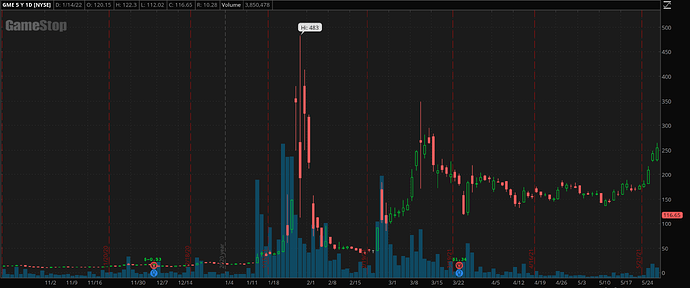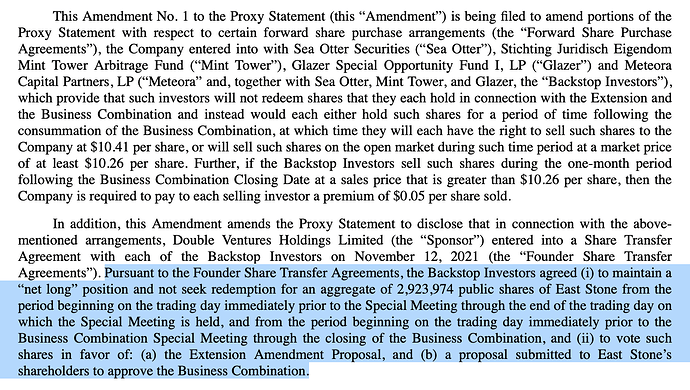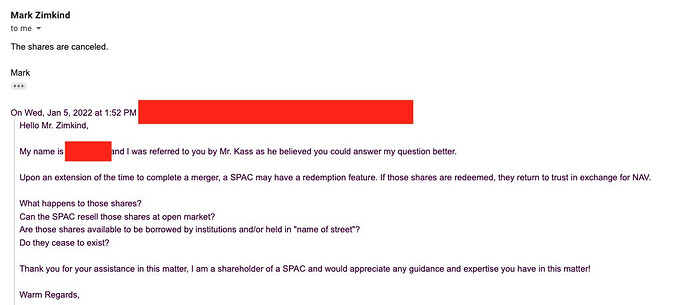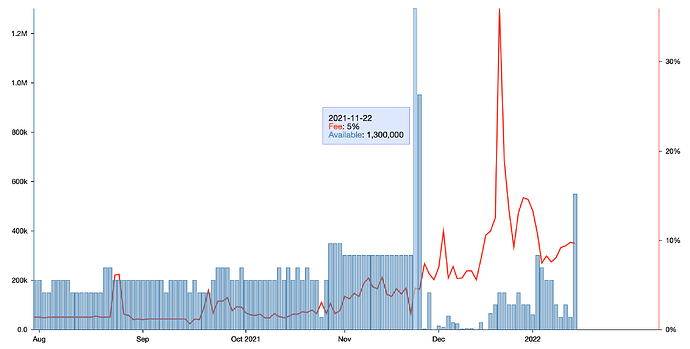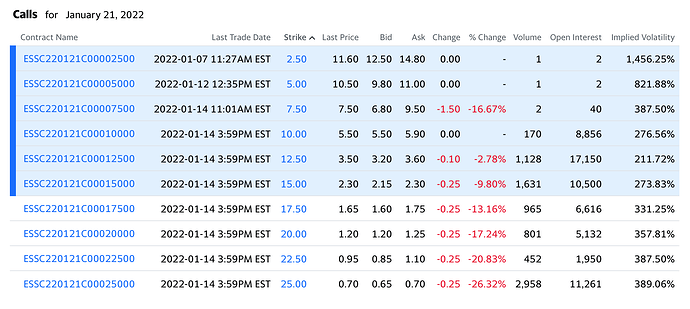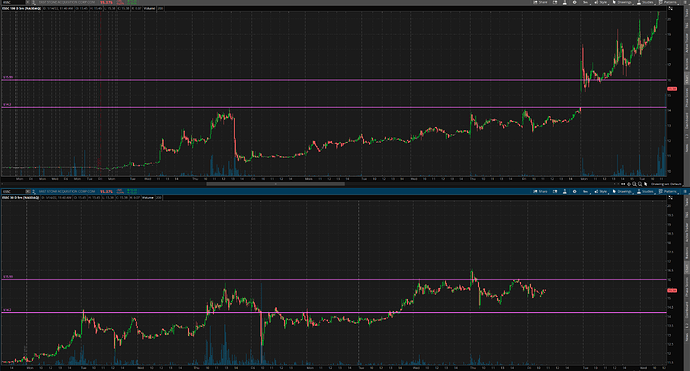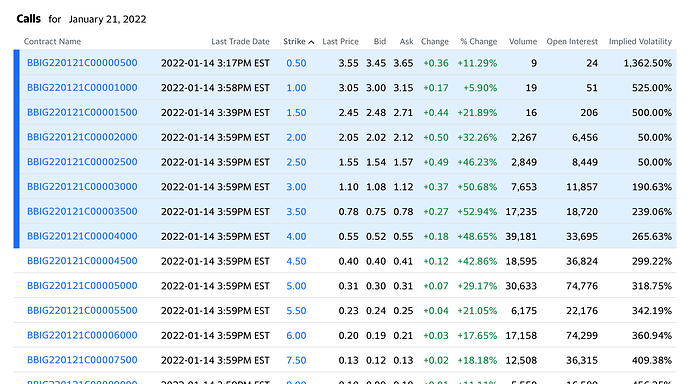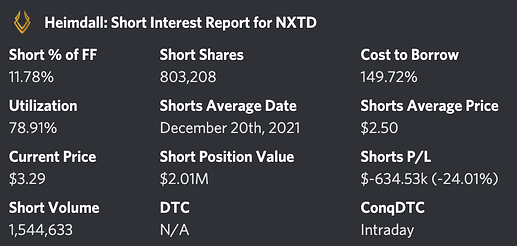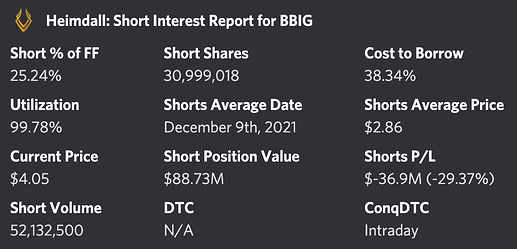Heading into this week, we are anticipating the ESSC play to gain a significantly greater amount of attention. Because of this, we’re releasing this updated and expanded signal fully outlining the research behind the play.
Overview
The Setup
This play is classified as a low-float gamma squeeze. This means that the stock has an unusually small amount of free trading shares and further it has less than the usually required amount of shares to have options. In this case of ESSC, the stock has 1.1M shares trading and the ITM OI accounts for 332% of those shares. There is also evidence that the float is actively shrinking to 340K shares (again) making this play not only even more unique, but potentially even more explosive.
This signal will lay out the specifics of the setup, including how we arrived at our calculation of the float and our analysis of the OI and the plays potential.
What is a Gamma Squeeze?
A gamma squeeze is a type of squeeze caused by delta hedging from options market makers. When a high amount of in-the-money (ITM) call options are sold on a stock, options market makers will “hedge” (acquire shares at market) to offset their risk. Normally this process is uneventful, however, should a stock acquire enough OI in comparison to it’s free-trading float, the act of hedging can create substantial buying pressure and a cascading affect that leads to a dramatic increase in the price of the underlying. Common examples of gamma squeezes are GME in January 2021, AMC in June 2021, SPRT in August 2021 and IRNT in September 2021:
The Company
ESSC is a pre-merger SPAC. This means that they’ve found a target for their merger and are in the process of completing it. Somewhat unusually they overshot the amount of time they had to fulfill their purpose and merge with a company, so in November, they requested an extension from their shareholders which was approved and their deadline was moved to mid-February 2022.
Outstanding Public Shares
Before we work down to our float count, we need to establish how many redeemable (free trading) shares there are. To this we look to the SEC filings which state there are 13,800,000 shares that are freely publicly trading:
Excerpt from: https://www.sec.gov/Archives/edgar/data/0001760683/000121390021059515/f10q0921_eaststoneacq.htm
The Redemptions
During the extension meeting, shareholders of ESSC opted to exercise their right to redeem a substantial amount of the company’s shares. When shares are redeemed in a SPAC, shareholders essentially “give back” their shares and their value is returned to them from the company’s trust. The shares that are redeemed are cancelled and no longer exist. This means that the number of outstanding shares, and thus the float, is lessened by the amount of shares redeemed.
In the case of ESSC, shareholders redeemed 10,534,895 of it’s 13,800,000 outstanding shares leaving 3,265,105 shares outstanding:
Excerpt from: https://www.sec.gov/Archives/edgar/data/0001760683/000121390021062187/ea151419-8k_eaststone.htm
Backstop Investors
Now there is a final part of this that has required extensive research to refine exactly the setup of these agreements and what they mean. The end result is that these agreements provide the mechanism that makes the float extremely small.
What are They
The Backstop Investors (BIs) are investors who are holding shares specifically to prevent them from being redeemed. Without the BIs the merger would potentially fail a vote or not have enough money in the trust account to meet requirements.
How Many Shares Do they Own?
Per the agreement, BIs have 2,923,974 shares. Provided BIs are holding all of these shares, this makes the float effectively 341,131 shares. Per this agreement, they are required to hold a net-long positon for the Business Combination Meeting which should be announced any day now. The agreement establishes a mechanicsm that allows them to “theoretically sell” and then acquire shares that were previously redeemed from the trust. This means that should the stock increase, they could sell their position and then simply reacquire all the shares they needed to be net-long at the price of only $10.26 per share. However, as we’ll explain, this isn’t the case and as a result, any BI that sells is in serious trouble:
Excerpt from: https://www.sec.gov/Archives/edgar/data/0001760683/000121390021058879/defr14a1121_eaststone.htm
Can They Sell?
They cannot sell without consequences which remove their profit from having done so. Each of the BIs owns greater than 10% of the outstanding shares which makes them insiders:
Excerpt from: Insider: Definition, Types, Trading Laws, Examples
Being an insider comes with certain restrictions, not the least of which is that you’re prevented from swing trading. This rule is referred to as the “short-swing profit rule”. The rule states that insiders cannot sell within six-months of having taken their position:
Excerpt from: Short-Swing Profit Rule Definition, Critique, Exceptions
In addition to this, insiders are also forbidden from short selling:
Excerpt from: https://www.sec.gov/Archives/edgar/data/1164964/000101968715004168/globalfuture_8k-ex9904.htm
There is also market mechanics reason that is disincentivizing them from selling. Per their agreements, should they sell, they were given a mechanism to repurchase shares from the trust to make themselves whole. However, this portion of the agreement is nonsensical. As was confirmed by the Trust themselves (credit to @Spacul8r on Twitter) all the shares in the trust are cancelled meaning they cannot be repurchased:
Excerpt from: x.com
Special thanks to @Spacul8r for their incredible help with this play. A true asset to the retail trading community without a doubt.
This of course means that should any of the BIs sell, not only are they forfeiting the profit from having done so, but they’ll also be forced to reacquire their shares at market before the Business Combination Meeting.
So of course, the BIs have held their shares through all the volatility ESSC has sustained over the course of the past month, including the first run to $14 and the second run to $26. Well, all except one.
The SeaOtter Sale
On November 16th, 2021, just ahead of the extension meeting, SeaOtter (one of the BIs) filed that they’d acquired 974,658 shares (a part of the total 2.9M that BIs hold together) [LINK]. This position was presumably held through the extension meeting and was then partially sold on December 13th, 2021 [LINK]. They sold a total of 849,658 shares, which brought the float total to 1,190,789 shares.
As we’ve covered, the other BIs have held their positions through the first run to $14 and the second run to $26 (confirmed as deadline to file has passed). For this reason we’re confident in our assessment that this sale was a mistake as it’s left SeaOtter in a very dicey predicament where they’re going to have to reacquire the 849,658 shares they sold at the market. It’s also the reason we’re confident that the other BIs will not sell, which locks in a float of at most 1,190,789 shares.
Possibly Re-Shrinking Float
As we’ve detailed SeaOtter has to reacquire their shares before the Business Combination Meeting. Considering this, they are most likely to do this before the meeting is announced considering the announcement could cause volatility that would greatly increase the price they have to pay for the shares. With this in mind let’s look at something curious that occured late last week.
Now, we know on November 16th, 2021 Sea Otter acquired their shares. Noticeably, just before the meeting on November 24th, 2021, we saw an increase in shortable shares roughly equal to Sea Otter’s newly acquired position:
Excerpt from: IBorrowDesk
Post meeting, this added liquidity was completely removed and only partially restored just after SeaOtters position was sold off in mid-December. Now, suddenly last week, the liquidity started to return with an influx of roughly 500K shares. Now, be warned, this is highly speculative and we have no way of knowing if this is correct until after OpEx because of the filing deadlines. However, we believe it’s possible that this influx of liquidity is due to SeaOtter reacquiring the position they mistakenly sold off before the meeting.
If this is the case, this means the float is actively shrinking back to 341,131 shares. Making this setup one of the absolutely craziest setups we’ve ever seen.
Final Notes on Float
We’ve fully outlined our float numbers. For the sake of the play we are currently using the 1,190,789 share float for our calculations, however, we’ll also provide the “best case” float calcs alongside due to the credible possibility that the float will be that size by OpEx.
The Squeeze
Now that we’ve got the setup defined as far as the float goes, let’s work out how that applies to the OI and creates our squeeze setup. As we reviewed, this squeeze is powered by market maker hedging heading into options expiration similar to GME, AMC, SPRT & IRNT.
The Options Chain
Below is the options chain for ESSC:
Excerpt from: Symbol Lookup from Yahoo Finance
There are currently 36,550 contracts in-the-money (ITM) which account for 3,655,000 shares. This puts the amount of the float claimed by ITM OI at a substantial 306%. In the event SeaOtter reacquires their position, the amount of float becomes an astounding 1,071%.
The next strike holds an additional 600,000 shares worth of OI bringing the percentage to 363% (1,268% if bought back) and if the whole chain goes ITM the OI would then account for 517% (1,806% if bought back).
OI Compared to Last Run & IRNT
Knowing that the float for the mid-December run to $26 was the same as it is now, we can compare the OI % of float which triggered that run. We’ll also compare it to another known low-float gamma squeeze, IRNT.
[chart type=“horizontalBar” backgroundColors=“orange” title=“ITM OI % of Float: IRNT vs ESSC Dec vs ESSC Now” xAxisTitle=“ITM OI % of Float” ]
IRNT | 213
ESSC DEC | 214
ESSC NOW | 306
[/chart]
When IRNT ran in September, the OI % of Float just before was 213%. In December, the ITM OI % of Float for ESSC that triggered the $26 run the week of OpEx was 214%. The number heading into OpEx this time around is 306%, making the current setup both more loaded than IRNT and ESSC #1 heading into this week.
Chart Comparison to Last Run
Below is a comparison of ESSC #1 on the top with ESSC #2 on the bottom.
There is a marked similarity between the two runs. Both runs started to gain momentum on the Monday two weeks out from OpEx. That run in both cases tapped upper resistance and pulled back for consolidation until Wednesday the week before OpEx at which time it returned to upper resistance, in the case of ESSC #1, breaking out the week of OpEx and running to $26.
What these charts illustrate is the process of delta hedging. There actually isn’t a significant amount of evidence to show that hedging is done in real time, in fact, there is far more evidence to support that meaningful hedging is done in batches on week 2 and 4 of a monthly options cycle.
Short Interest
While we don’t believe it’s meaningful for this specific play, there is a substantial amount of short interest currently in regards to % of float:
Shorts are currently just going out-of-the-money (OTM) on average, however, should price action continue shorts totaling 127% (443% if bought back) could find themselves underwater and it’s very likely a portion of that can risk margin call.
Comparison to “Other Gamma Candidates”
We’ve seen an increase in the amount of “gamma setups” since ESSC #1. To highlight how unusual and potentially crazy this setup is and how disengenuous some are being with their research, I’m going to do one more ITM OI % of Float comparison to two popular “gamma squeeze” tickers on Reddit at the moment. By searching Reddit I found these two:
Calculating NXTD
First up is NXTD, I’m going to use the lowest listed float across these sites which is 4.5M.
And the options chain:
4,569 ITM contracts accounts for 456,900 shares which is 10% ITM OI % of Float.
Calculating BBIG
Doing the same here, we’ll go with the lowest float calc which is 80M.
Now let’s look at the options chain:
79,457 contracts ITM accounts for 7,945,700 shares which is also 10% ITM OI % of Float.
Comparing vs ESSC
Now let’s put it all together:
[chart type=“horizontalBar” backgroundColors=“orange” title=“ITM OI % of Float: NXTD vs BBIG vs ESSC” xAxisTitle=“ITM OI % of Float” ]
NXTD | 10
BBIG | 10
ESSC | 306
[/chart]
Bonus: SI Comparison
Let’s quickly compare the short interest on the same tickers:
Now, being completely fair, I’m going to recalc these using our lowest float numbers. This makes NXTD 17% SI % of Float and BBIG 38% SI % of Float.
Now let’s put these together:
[chart type=“horizontalBar” backgroundColors=“orange” title=“SI % of Float: NXTD vs BBIG vs ESSC” xAxisTitle=“SI % of Float” ]
NXTD | 17
BBIG | 38
ESSC | 127
[/chart]
Wrapping Up
It’s safe to say that ESSC is miles ahead in potential and is potentially one of the craziest setups we’ve seen in recent history. Everything about the play points towards an imminent gamma squeeze that is likely capable of easily beating out the $26 high of the last run. The OI is larger, the ramp is better formed and the sentiment I think this time around will undoubtedly be stronger.
Closing Out & Signal Overview
In closing, this expanded signal has been written to provide complete transparency for the play as often information can be sporadic and the full picture can get lost in translation across multiple platforms. Below you’ll find our normal condensed signal.
Official Signal Overview
ESSC has met our criteria to generate a signal for an imminent gamma squeeze. Our conditions require that a stock have the following:
- Significant OI ITM
- Organic bullish momentum pushing the underlying towards a breaking point
- Increasing sentiment
- Enough of an established “ramp” to propel the price movement upward without additional buying as OpEx draws closer.
The Setup
- This is a pre-deSPAC play. ESSC had redemptions triggered before actually merging, therefore there is no danger of PIPE related dilution at this juncture. We also believe there is no further danger of dilution from Backstop Investors either. However, everyone should be mindful that anything is possible in this world, we’ve done a considerable amount of research on this and are confident in our understanding of the situation, but certainly be careful and don’t over leverage yourself.
- The redemptions initially left the float at 340K, however, with a confirmed sale by one of the SPAC’s backstop investors, the float rests at ~1,190,789 shares.
- We believe that at some time in the near future, the same backstop investors who sold, will be required to obtain their position back at the market, essentially repurchasing 70% of the float, once again making it 340K.
- ITM OI is 302% of the float. The 17.5c makes it 363% of float and the entire chain accounts for 517% of the float.
- SI is now 127% of free float.
What we’re calling
- This play is a gamma squeeze setup primarily. Due to the high amount of options sold which are currently ITM in comparison to the float, we expect the normal market mechanics of options Market Makers hedging (acquiring shares to offset risk) to force the price upward as options expiration draws closer.
- There is a short squeeze component to this now as well although we believe this typically are meaningless for this type of plays.
This play is very risky so only partake with money that you can afford to lose. We can be wrong, we have been wrong.
Good luck and godspeed gentlemen.
Disclaimer: I am not a financial advisor and this is not financial advice.
Morning Update #1
ITM OI is at 305.3% of float (down from 306.9%) and the whole chain is up to 525.1% (up from 516.5%). SI is at 174% of Float (up from 127%)
Morning Update #2
ITM OI is at 71.9% of float (down from 305.3%), the 12.5s bring that to 209.8% of the free float and the whole chain is up to 520.7% (down from 525.1%).
I will say that I’m shocked at how well the OI has held and can confirm that this is still very much in play should the underlying rise above the 12.5 strike.
Morning Update #3
ITM OI is at 69% of float (down from 71%), the 12.5s bring that to 202% for float and the whole chain is 521% (up from 520%)
